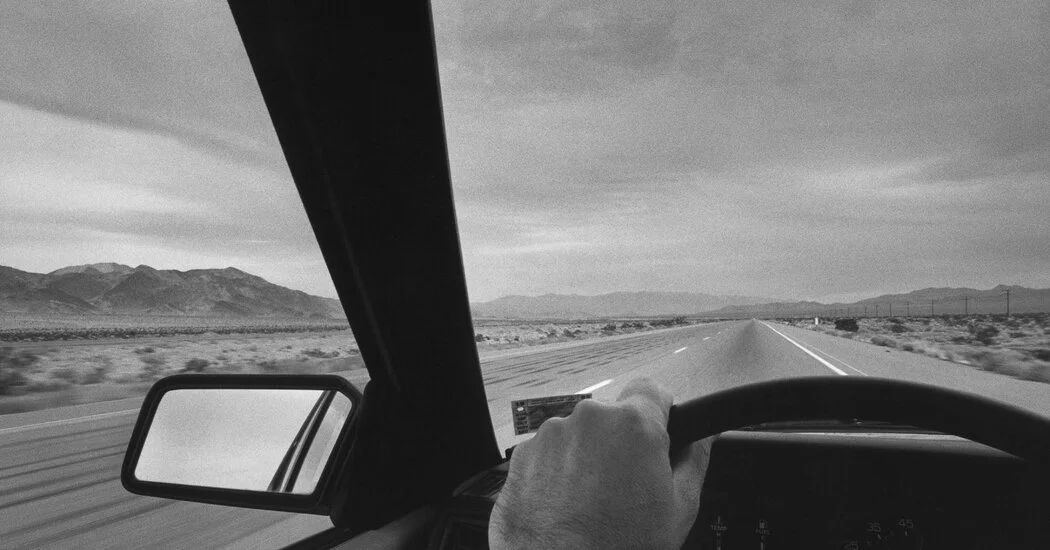We got the first to replace our 10-year-old, gas-powered Subaru, and after only two years of driving, the E.V. has created fewer emissions over its lifetime than if we had kept the old car. It will take our second E.V. only four years to create fewer emissions over its lifetime than the 2005 hybrid Prius it replaced. That’s counting the production of the batteries and the emissions from charging the E.V.s, and the emissions payback time will only continue to drop as more emissions-free wind and solar power comes onto the grid and battery technology improves.
The author of course did not look at having one less car, and substituting an ebike or mass transit for part of their driving, which would have lowered emissions by a larger amount.



I’m immediately put off by “relax.” Complacency is not the solution to the climate crisis. Consumerism is not the solution to the climate crisis. It’s going to take continuous collective action. It will take doing things that feel uncomfortable at first. Your flashy new EV that lets all your neighbors know you have EV money is not a boilerplate one size fits all solution. Your local municipality buying a garage to house and maintain a fleet of EV buses that transport ~2 people at a time is the solution.
People misunderstand how to assess if a bus is helping. They see a mostly empty bus and declare that it would have been better to have the two bus users in EVs when the reality is that as soon as you have the emissions of a bus divided across 2 people, you’ve already beaten any possible single vehicle configuration thanks to scale. Not to mention, you want some leeway at 11pm so that at 5pm (rush hour) you have crush capacity.
The other thing with bus advocacy is that buses are not sexy like light rail or metro rail solutions, but you can effectively implement them immediately. They’re a magnificent transitional mass transit solution, and one you will probably want to have even after you have a light rail or metro rail solution because sometimes you’ll need to do track maintenance and move transit passengers onto buses for those portions, and that the attractiveness of your mass transit solution is all about the final mile of transit. You can put a bus stop almost anywhere, ensuring that people can arrive conveniently and safely at their destination, even if there’s absolutely no way you could put a rail station nearby.
“Relax, Electric Vehicles Really Are the Best Choice for the Climate” screams of privilege…
I’d argue that trollybusses are a better option since they let you massively cut down on needed battery capacity at the cost of NIMBYs, but i doubt the average NY Times opinion reader is very likely to be convinced to take a bunch of time to get involved in local politics.
They might however be convinced to go with an EV instead of mindlessly buying another gas car like they were planning. Is it perfect, fuck no. Is it far better than the alternative, yes. EVs cannot solve climate change, but they are a way the average american that has a vague care for not getting killed by climate change can help.
I also suspect that the relax was aimed at the more commonly stated viewpoint on these sorts of articles, which is that EVs are a horrible scam and you should be driving the largest gas truck you can becuse its cheaper, not really, and actually better for the environment becuse cobalt mining is so horrible and climate change is really just a myth.
Trollybusses are indeed an excellent filler in transit quality between a bus and a light rail solution. An ideal metropolitan mass transit solution has tiers. The first tier is “Walkable 15 minute neighborhoods,” the second is “A bus to get you to the trollybus,” the third is “A trollybus to get you to the light rail system,” and the fourth is “A light rail system to get you to the next town over.” And obviously, you don’t have to hit every tier in the mass transit scheme to get from your current location to your final destination, but the mix of types of transit helps each type of transit support eachother, allowing transit users to get from place to place quickly and cheaply. My argument is mainly “you start with a bus” because the implementation cost is low. It’s a bridge solution that helps you get from your current level of mass transit to your ideal goals, and one that you’ll likely want to make use of even when your ideal transit solution is implemented, as it has a degree of flexibility that no other solution offers.
The other thing is buses can even make sense in exurbs and even rural areas. I grew up in a rural area in Appalachia that implemented a county level bus system that taxpayers immediately argued was going to be a waste of money, but when it was implemented, the buses out in the most remote portions of the county saw the most usage as it allowed elderly passengers, and very poor passengers, to go visit their relatives in town, as well as anyone with a broken down car to make a trip to AutoZone to get the part they needed to get their car back on the road again. A lot of the time, it’s not just about making it possible for people to get to city services, it’s also about getting city services out to the people.